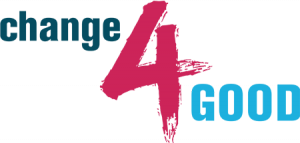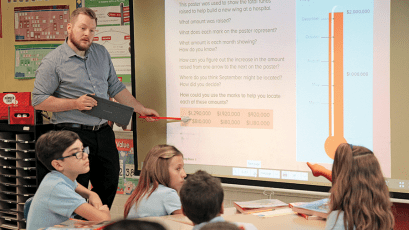Great Ideas
Math Discourse: Make a Change for Good: Part 5
Using classroom discourse to modernize elementary math instruction
This article is the last of a five-part series on using what we know to modernize elementary math instruction.
In the first article in this series, I introduced four “influences or actions” that come from John Hattie’s (2017) groundbreaking research. This article will focus on the fourth influence on the list.
- Modern Math Instruction Series Part 2: Implement a “spaced” program of learning mathematical ideas over time
- Modern Math Instruction Series Part 3: Adopt a Piagetian approach to teaching mathematics concepts and skills
- Modern Math Instruction Series Part 4: Develop students’ mathematical language
- This post: Foster discourse in the mathematics classroom
Part 4 of this series stressed the need to develop vocabulary, because language is the tool we use to help connect new ideas to existing ideas. Rounding out the four “influences or actions” that will make the biggest difference to instruction, is the use of classroom discourse in math.
What is Math Discourse? Why Is It Important?
What is the definition of math discourse? It is creating opportunities for students to use their language so they can make mathematical connections. In other words, it’s the forum in which students can use their language. This discourse can and should occur between teachers and learners, but also between and among learners themselves. Math students should be encouraged to both share their ideas and critique the reasoning of others. Math discourse questions and sentence starters can be as simple as:
- How do you know?
- Why did you solve it that way?
- What other strategy could you use?
- What other problem would you solve using your strategy?
Sara Delano Moore, a contributing author to Visible Learning for Mathematics, explains in this blog article how to generate classroom discourse by posing purposeful questions and through the use of appropriate tasks.
Math Discourse Prepares Students for the Workforce of Tomorrow
With an effect size of 0.82, we now know that meaningful mathematical discourse is likely to give two years of gains for each year of schooling. It’s no wonder that the generation of “mathematical discourse” officially receives mention in every state, national, and international standards that have been written in recent years. However, fostering classroom discourse is not just good teaching practice, it also serves to better prepare students for the workforce of today. Deming (2017) noted that when surveyed, employers routinely listed teamwork, collaboration, and oral communication skills as among the most valuable, yet hard-to-find qualities of workers. Giving students opportunities to communicate and collaborate is not only for mathematical understanding, they are developing the social skills they need to land a job when they graduate. Beyond promoting understanding, math discourse promotes innovation, creativity and problem solving.
New technologies are making us feel like society is moving forward faster than ever before. Yet, generally speaking, education and the teaching of mathematics, has remained pretty much unchanged for decades. We can certainly tweak standards of content, but a major shift in the approach to teaching the content needs to take hold and stick. We can no longer afford to look at what “works” as we have too much catching up to do. It’s now time to identify and implement what works best. Embracing these four influences or actions is a great start toward making a serious “Change for Good.”
- Implement a “spaced” program of learning mathematical ideas over time
- Adopt a Piagetian approach to teaching mathematics concepts and skills
- Develop students’ mathematical language
- Foster discourse in the mathematics classroom

References
Deming, David J. “The Growing Importance of Social Skills in the Labor Market.” The Quarterly Journal of Economics, vol. 132, no. 4, 1 Nov. 2017, pp. 1593–1640., doi:10.3386/w21473.
Hattie, J., Fisher, D., Frey, N., Gojak, L.M., Moore, S.D., Mellman, W. (2017). Visible Learning for Mathematics. Thousand Oaks, CA: Corwin Press.
About ORIGO Education
ORIGO Education is dedicated to making learning meaningful, enjoyable and accessible for all students and their teachers with Pre-K and Elementary print and digital instructional materials, as well as professional learning for mathematics.
![]()




